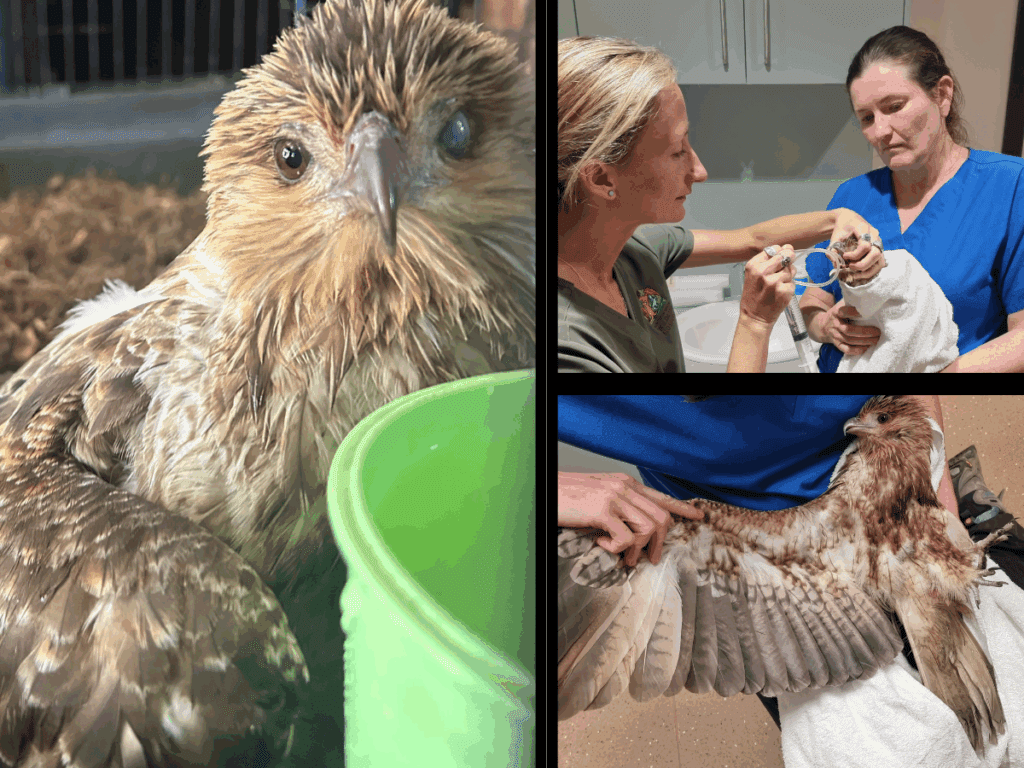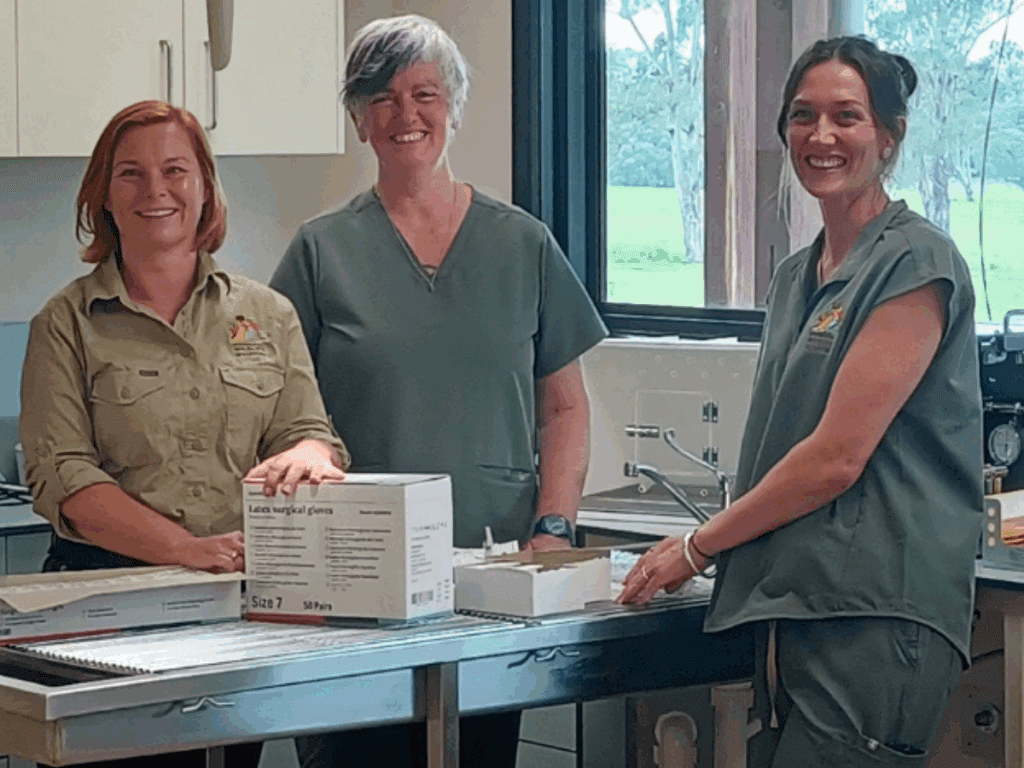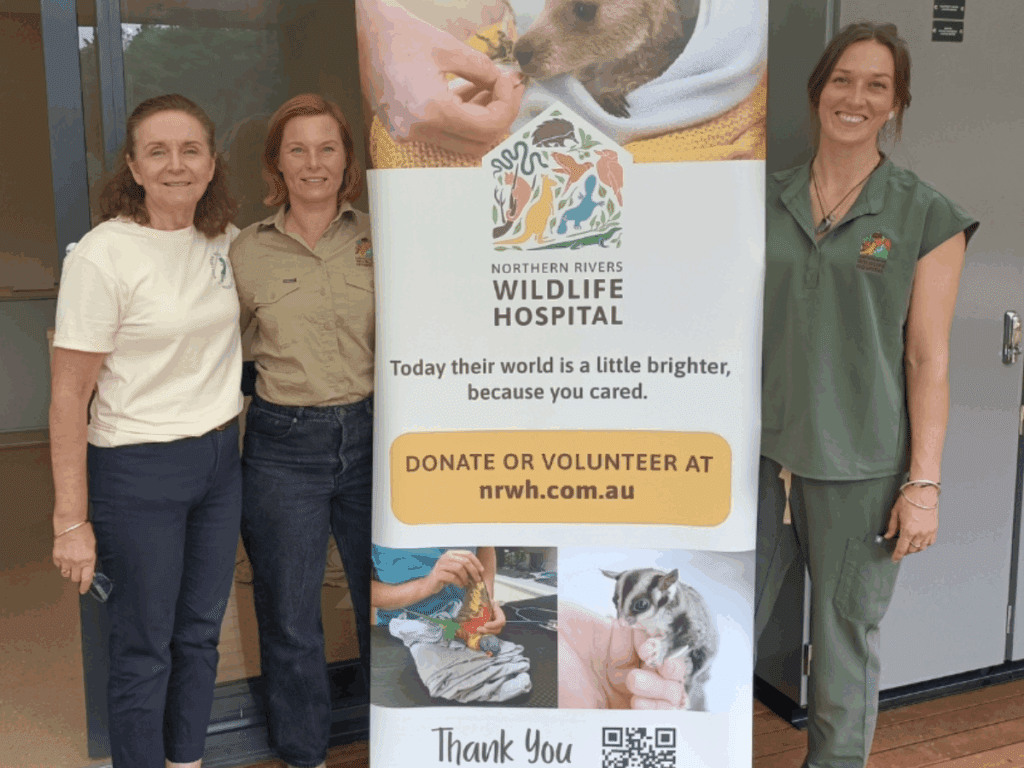Stage one of the Northern Rivers Wildlife Hospital (NRWH) opened officially recently, in Wollongbar, and it is making a difference to our native fauna populations already.
A native raptor – a Whistling Kite was found caught in a fox trap at Coraki. It was believed to be there for four days before being found, and a Wires rescuer could free it.
The kite was safely transported to the NRWH in their transport van, however, the injuries suffered by the bird were too severe, and it couldn’t be saved.
“It is the tragic side of wildlife rescue, but another reason we are passionate about educating the community about wildlife safe practices so we can protect our incredible biodiversity,” said a spokesperson for the hospital.

Ballina News Daily asked the hospital how it will fit into the current wildlife care and rescue facilities in the region. The spokesperson explains the gap in the region that the NRWH fills, “The Northern Rivers region is one of the most biodiverse areas in Australia, and wildlife carers and rescuers report over 12,000 cases each year.”
“There was a great need for a permanent bricks and mortar wildlife hospital that provides state of the art facilities including an ICU and in-patient wards and existing services were often at capacity with cases rising each year.
“Wildlife rescuers and carers often had to travel hours to Brisbane or Currumbin for specialist care if local facilities were at capacity, causing delays that could be fatal for injured animals.”
Since the inception of the idea in 2018, the NRWH worked in collaboration with other members of the Northern Rivers Wildlife Network and is designed to complement and support existing services, including local veterinary clinics and volunteer rescue groups.

Ballina Shire Council reports that we have 151 native animals listed on the endangered species list in the shire. 304 species of fauna live only in the Northern Rivers region, according to a report by the Dept of Climate Change, Energy, the Environment and Water.
The NRWH aim to provide faster access to care, better survival outcomes, and they support the work of wildlife services across the region.
The hospital is fitted with equipment to treat “animals as small as tiny native microbats, juvenile snakes (from 12 grams), feather tailed gliders and hatchling birds, right through to larger mammals such as adult koalas, wallabies, and eastern grey kangaroos (that can weigh up to 80kg). Everyday is different!” said the spokesperson.
Amongst the hospital’s facilities is the capacity for around 30 patients to be treated at any one time. There is an ICU ward with 6 intensive care cages, 2 walk-in cages for larger animals, an incubator & space for up to 6 portable cages.
The NRWH has four main pursuits; as well as being a first rate wildlife hospital in Australia, it endeavors to advance the natural environment around us, improve community knowledge and engagement and grow the wildlife movement.
“Our immediate focus is treating animals that need urgent care, however as we settle into operations our community engagement and education programs will begin to roll out. Over time, this will include:
· Workshops and talks for wildlife groups and the general public
· Partnerships with TAFE and Southern Cross University Vet School
· Volunteer training programs
· Educational resources for schools
· Community events such as open days and tours
· Social media campaigns to share rescue tips and wildlife stories
Running and financing the hospital will rely on the community for volunteers, grants, donations and sponsorships.
“Northern Rivers Wildlife Hospital is a public company limited by guarantee. It is independent and proudly 100% community-owned and managed by a volunteer board.
“It was established through a combination of local fundraising, State Government grants, a Federal Government Bushfire Recovery grant, a grant from local MP Tamara Smith, WWF support, IFAW support, NRCF grants, local foundation grants, private donations, and in-kind contributions from businesses and individuals.

“While State Governments are responsible for overseeing the protection and care of wildlife, they do not provide direct veterinary services.
“The hospital is located on public land under a long term lease through Crown Lands NSW.”
A resource guide has been developed by the NRWH to help people be prepared to help wildlife in need of assistance. It is called DRWILD and uses that name as an acronym to provide the relevant steps to provide safe support to animals. Have a look at their website for details.
All images provided by Northern Rivers Wildlife Hospital.



The NRWHospital is set out with large areas to work with the animals that come in.
It was desperately needed in this area and the staff are caring and supportive.
The animals that need to stay longer have lovely quiet areas to recover if needed before they go into care with Wildlife Carers.